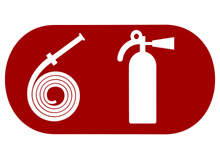
Rail industry executives are gearing up for Arena International’s Fire Protection of Rolling Stock event, where rail representatives from across the continent will gather to discuss new EU-wide laws being implemented to ensure all rolling stock complies with the latest fire safety regulations.
Ensuring technical expertise and training in the use of new technology and equipment will be the most pressing concern of delegates and other members of the rail industry who must ensure rail systems meet tough new laws. While fire remains a very real and dangerous hazard to systems and passengers, there are a number of other key safety failures which must also be taken into account as part of the overall safety of rolling stock.
Working conditions and equipment failure
Following the rail crash in February 2010 between two trains in the Belgian town of Buizingen, which lies south-west of the capital, train drivers in the country have staged wildcat strikes to protest against the poor working conditions they believe contributed to the accident, one of the worst rail accidents in the country for almost 35 years.
The striking train drivers say the collision that killed 18 people on the outskirts of Brussels has vindicated fears over rail safety, and the serious injury of 171 people, some of whom needed on-the-spot amputations, could have been avoided. Belgian police are currently waiting to interview the injured train driver as part of their investigations into the cause of the rail crash. Only then will it become clearer if working conditions played a part in causing the accident.
The striking Belgian rail workers have also claimed that the crash may partly have been the result of poor safety equipment. Speaking to local media following the crash, some engine drivers said there had been accidents at the same spot in the past. Perhaps the most worrying part of these interviews was the warnings by the drivers that there could be more such accidents to come.
Prosecutors have not yet confirmed early reports that one of the train drivers drove through a red light or that the trains were not equipped with new safety equipment that should have automatically stopped the engine. The Belgian national rail services (SNCB) has admitted however that not all trains were fully equipped with the system, which was introduced after another crash in the country in 2001.
Onboard rail safety
Onboard rail safety systems incorporate fire safety laws but organisations made up of influential rail representatives such as Transport Fire Safety Engineering in the EU (TRANSFEU) are working to push for more to be done to incorporate a comprehensive fire engineering concept for rolling stock. The TRANSFEU project has been approved and a four year programme to implement its strategies began last year. Its main objectives are to support European standardisation and to develop a fire-safe performance-based design methodology, especially for rolling stock in tunnels, according to a statement on its website. The group said it hopes to propose a classification scheme for railway products and an evaluation of the scheme under real fire scenario conditions.
The consortium, which includes all major European train builders and train operating companies such as Alstom, Bombardier, Siemens, AnsaldoBreda, CNTK, Trenitalia, DB, SNCF and RATP, is supported by the Association of the European Railway Industry (UNIFE). The group’s aims include enforcing new technology and ideas to avert incidents such as the 2008 Channel Tunnel fire, which involved a Eurotunnel shuttle train carrying heavy goods vehicles (HGVs) and their drivers.
Rail weather warnings
Safety is not always confined to preplanned systems and risk-averting equipment. External factors also play their part in causing accidents on passenger and freight lines. Extreme weather systems, in particular winter weather can severely disrupt the smooth running of rail and underground systems, particularly in countries that do not have contingency measures to ensure the transport network can operate in conditions such as snow.
In 2003, the UK’s Department for Transport (DfT) carried out a report on the link between weather patterns and the impact of climate change on transport networks, but the results were largely inconclusive. While debate continues on the exact nature and potential speed of climate change, the DfT recently said it supported a “well-designed international emissions trading regime as the most efficient way of tackling the impact of climate change, but this referred predominantly to the aviation industry.
While it is difficult to predict vast changes in climate in every country, the short-term impact of colder winters should be easier to prepare for. The effects of the biting cold weather and subsequent snow in the UK and France in early 2010 led to failures in the Eurostar’s mechanical systems, which led to at least three days of severe delays and gaps in the service.
The high-speed service was hit with fresh problems in February 2010 when more than 700 passengers had to be rescued from a train in Kent, England. Eurostar said the train was experiencing major technical problems after it ground to a halt and power was cut. While services have resumed, it will be a while before results of the investigation into the Belgian crash and Eurostar’s technical problems come to light. The rail industry will then be called upon to answer important questions on safety and implement measures to significantly reduce safety breaches and incidents.
The Arena Fire Protection of Rolling Stock conference will take place in London on 24-25 March 2010.



